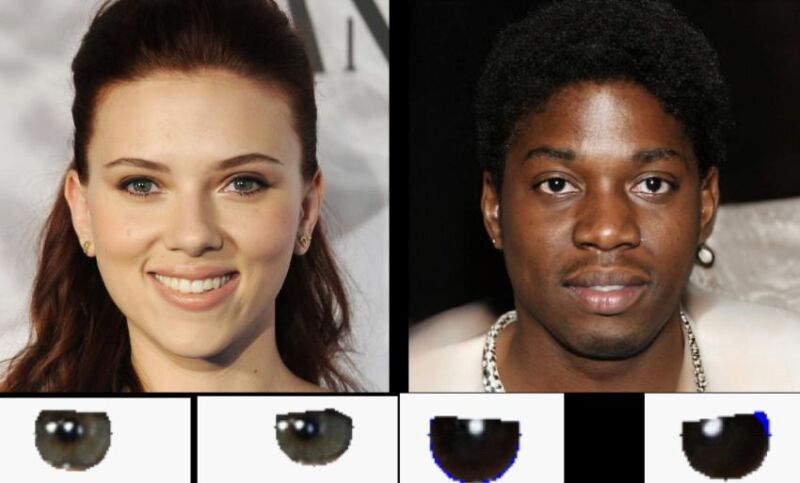Astronomers discover technique to spot AI fakes using galaxy-measurement tools

Enlarge / Researchers write, "In this image, the person on the left (Scarlett Johansson) is real, while the person on the right is AI-generated. Their eyeballs are depicted underneath their faces. The reflections in the eyeballs are consistent for the real person, but incorrect (from a physics point of view) for the fake person." (credit: Adejumoke Owolabi)
In 2024, it's almost trivial to create realistic AI-generated images of people, which has led to fears about how these deceptive images might be detected. Researchers at the University of Hull recently unveiled a novel method for detecting AI-generated deepfake images by analyzing reflections in human eyes. The technique, presented at the Royal Astronomical Society's National Astronomy Meeting last week, adapts tools used by astronomers to study galaxies for scrutinizing the consistency of light reflections in eyeballs.
Adejumoke Owolabi, an MSc student at the University of Hull, headed the research under the guidance of Dr. Kevin Pimbblet, professor of astrophysics.
Their detection technique is based on a simple principle: A pair of eyes being illuminated by the same set of light sources will typically have a similarly shaped set of light reflections in each eyeball. Many AI-generated images created to date don't take eyeball reflections into account, so the simulated light reflections are often inconsistent between each eye.